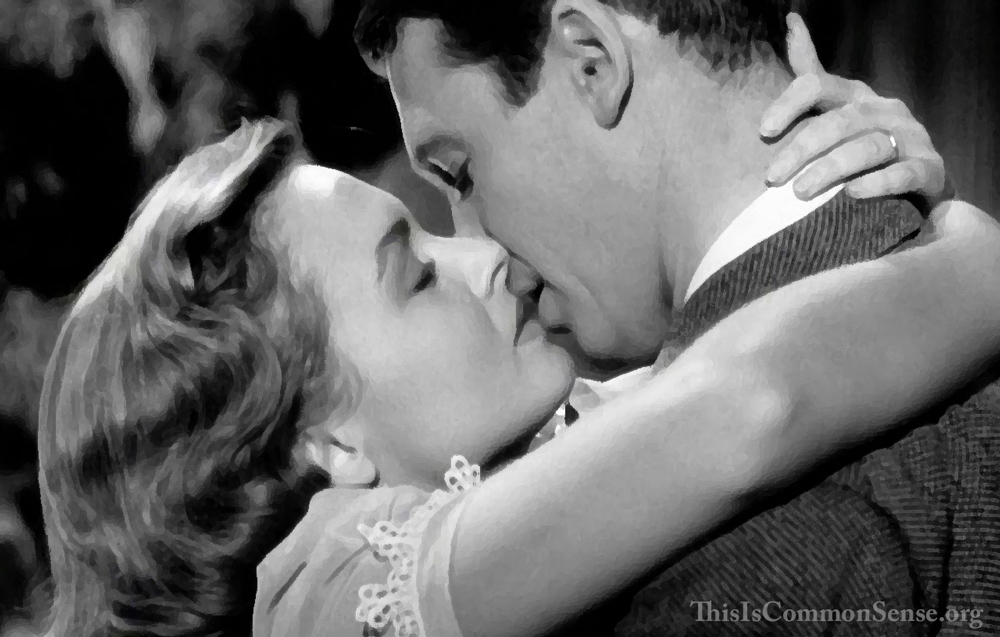“I cannot express how much I love this movie,” Monica Hesse writes in her Christmas eve Washington Post column about It’s a Wonderful Life (Frank Capra, dir.; 1946).* Yet she mocks protagonist George Bailey as “the tortured Boy Scout-type” and contends that “Mary Bailey is the true hero.” Meaning that her husband George — beloved by many in fictional Bedford Falls — is not the “true hero.”
Puh-lease.
Even Mr. Potter, the movie’s villain, acknowledges that Bailey is “no ordinary yokel.” George is bright, ambitious, hardworking and, most importantly, a good man — someone who cares about people.
He makes sacrifices: taking over his deceased father’s business instead of going to college with money he has saved; loaning that money to his brother to go in his stead; and once turning down ten times the salary so that folks in the town have “someplace to go without crawling to Potter.”
Hesse ignores all this to mark George as a deadbeat regularly bailed out by his wife, Mary. When in one scene “a market crash threatens to sink the Bailey Building & Loan,” Hesse smugly asks, “whose idea is it to donate George and Mary’s honeymoon funds to keep things afloat?”
Indeed. But George earned that money and, having just shared it with his new bride, would never take it back. Still, many spouses would lack Mary’s quick thinking.
Hesse belittles George’s existential panic at impending bankruptcy and scandal as “his foul work-mood,” and highlights Mary as “the one who’s been home all day with a sick toddler.”
As if a competition.
Most perplexing for Hesse? “[T]he movie suggests that the saddest thing of all is that Mary Bailey became a librarian.” Well, not exactly. In the world the angel shows, in which George had never been born, it is that Mary “never married,” not the librarian gig, that rocks George.
But had Mary wed a wonderful fellow enjoying a relentlessly happy family, that would hardly demonstrate to George Bailey what the angel Clarence insists, that George’s life mattered.
“The entire movie celebrates the personal sacrifices of a nice man,” claims Hesse, “while ignoring the identical sacrifices of a nice woman.”
It’s a Wonderful Life is told from George’s perspective but doesn’t ignore Mary’s sacrifices at all. If it did, how on earth could Hesse recount them?
Moreover, George and Mary are more than merely “nice.” They have the courage and commitment to do for each other and the world around them . . . even under enormous stress.
Both are heroes. Don’t let Monica Hesse or anyone tear them asunder.
This is Common Sense. I’m Paul Jacob.
* If you are part of the less than 1 percent who have somehow dodged viewing the ubiquitous film, George’s uncle misplaces (into Potter’s evil hands) $8,000 of the company’s money, which would force the Bailey Building & Loan into bankruptcy likely followed by George’s criminal prosecution. Desperate and unable to come up with the money on Christmas eve, George considers suicide to save the business and his family with his life insurance money. But an angel intervenes and shows George what the world would be like without him. George decides he wants to live and get back to his wife and kids and, when the angel returns him to real life, Mary has rallied all his friends who contribute many times the amount of money needed. Lots of heroes found in this flick.
—
See all recent commentary
(simplified and organized)

1 reply on “Heroism & Love Abounding”
Bravo!